
views
X
Trustworthy Source
PubMed Central
Journal archive from the U.S. National Institutes of Health
Go to source
Lowering these levels may also help people with medical disorders affecting muscle development, like muscular dystrophy or other wasting diseases. To lower myostatin levels, both cardiovascular (aerobic) exercise as well as resistance training (weight training) are useful. Quitting smoking or asking your doctor about specific therapies may also help.
Doing High-Intensity Resistance Training
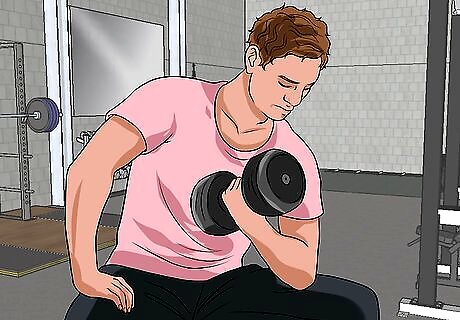
Put the “HIRT” to your myostatin levels. Resistance training of any kind can improve health and build muscle. But to lower myostatin levels, you’ll need to engage in high-intensity resistance training (HIRT). This is resistance training that pushes you to your physical limits. HIRT involves full-body workouts. In other words, your resistance training regimen should work your arms, back, and legs.
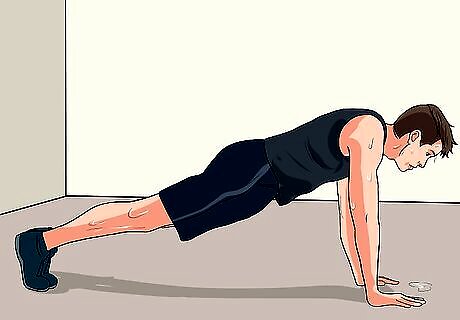
String several resistance training exercises together for a superset. Instead of limiting your set by the number of repetitions per exercise, limit it by a length of time. Perform as many repetitions as possible without resting during the time limit you’ve set. For instance, do 10 push-ups, 10 pull-ups, 10 leg extensions, then 10 biceps curls as quickly as possible over the course of about 10 minutes. If you’ve gone through the 10 biceps curls before the 10-minute time limit has elapsed, start the cycle again by doing 10 push-ups. Rest one or two minutes between each superset, stretching the muscles you’ve used.
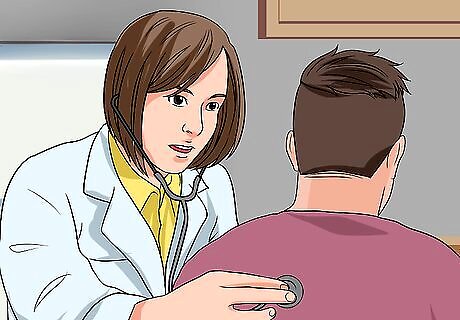
Use caution during HIRT. HIRT can be physically taxing. Talk to your doctor before adopting a HIRT exercise regimen and don’t perform HIRT more than three or four times per week. Give your body time to rest and heal, too, ideally at least one day between workouts. It’s best not to do HIRT sessions on back-to-back days.

Choose the right weight. When doing resistance training, you must choose the right weight for you. Start at the lowest weight for whatever machine or barbell you’re using. Perform 10-12 reps. If you find that it was very easy and you don’t feel taxed by the end of your 10-12 reps, add weight in small increments. You’ll know you’ve found the right weight for you when 10-12 reps is significantly taxing.
Trying Specific Resistance Exercises

Perform biceps curls. Grip a barbell from below with your palms facing up. Grip the barbell in such a way that the weights on either end are equidistant from each hand, and place each hand shoulder-width apart from the other. Lift the bar to your chest using your elbows. Keep your elbows pinned to your side as you lift. Sliding your elbows behind your ribs will decrease the amount of work your biceps do. Don’t swing the bar up using the momentum from your hips.
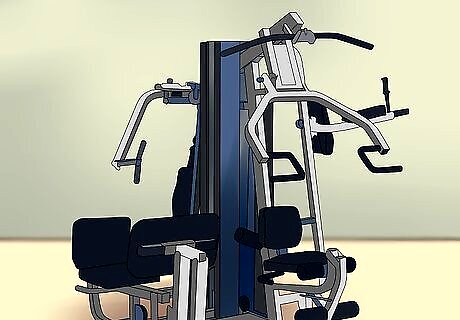
Use a chest press machine. Sit at the chest press machine and adjust the seat for your height. The handles should be situated near the middle or bottom of your pectoral muscles. Lay your hands on the handles of the machine. Your shoulder blades should be retracted. If they are not, adjust the position of the machine’s handles so that they are. Keeping your head and chest up, press the handles forward, extending through the elbow. Pause briefly when you’ve reached your maximum extension, then return the handles to a position just beyond the starting position in order to keep the tension on.
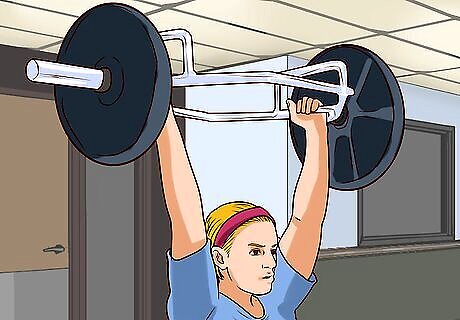
Use a machine shoulder press. The machine shoulder press is not unlike the chest press, except that instead of pushing forward, you push up. Grip the handles of the machine, keeping your elbows in line with your torso. If your elbows are not lined up with your torso, adjust the level of the seat. Lift the handles as you exhale. Extend your arms slowly. When you reach your maximum extension, hold the position briefly, then bring the handles back down to a place just above the starting position.
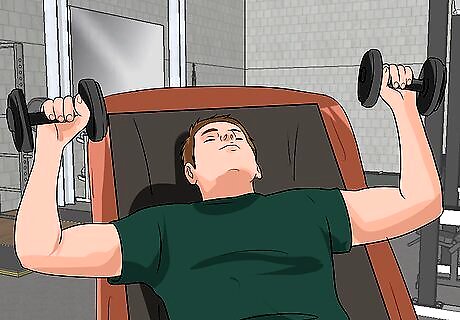
Try other resistance exercises. There are many other resistance exercises that could lower your myostatin levels. For instance, you might want to do squats or lift free weights. Resistance bands are also good and very easy to use at home.
Performing Aerobic Exercises
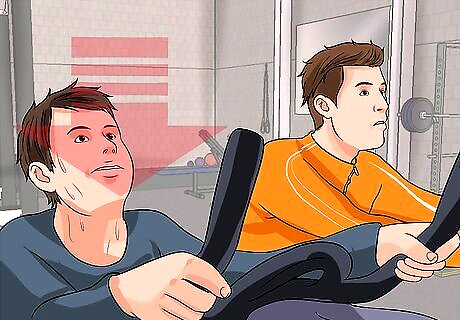
Exercise at a moderate intensity. When using aerobic exercise to reduce your myostatin levels, you have significant leeway regarding how much exercise you wish to do. To begin reducing myostatin levels you need only exercise at about 40% to 50% of your maximum ability. Pushing yourself beyond these basic exercise levels will result in a greater decrease in myostatin. Working out at moderate intensity on a bike, elliptical, or in other aerobic exercises will feel similar to taking a brisk walk. You should burn at least 1,200 calories each week to see real declines in your myostatin levels. To track the number of calories you burn, check the digital readouts on your aerobic exercise equipment, or use a wearable fitness tracking device (for instance the FitBit). It takes about 3,500 calories to lose one pound of body fat. If you don’t need to lose weight, make sure to eat more or supplement your diet to recover this energy.

Use an elliptical. An elliptical training machine (sometimes called a “ski machine”) is a popular piece of equipment that can help you lower your myostatin levels. To use the elliptical machine, step onto the machine’s foot pads. Place your left foot in the left foot pad, and your right foot in the right foot pad. Grab the left and right handles. Select the settings under which you wish to train. For instance, you can increase the machine’s resistance or set time or calorie burning targets, keeping in mind how many calories you’ve consumed. The handles and feet pads on a given side of the machine work in opposition to each other. In other words, as you swing the machine’s right handle forward, your right leg will move back. On the opposite side, the left hand will be pulled back and your left foot will be moved forward. Swing your feet and arms forward and backward in time with the machine.

Ride a bike. Riding a bike is a common aerobic exercise and can lower your myostatin levels. You can ride either a regular bike or a stationary bike to gain the benefits of lowered myostatin. Ride at moderate intensity to lower your myostatin levels. Aim to burn 1,200 calories per week by riding a bike – or more or less depending on your weight goals. Always use safety when riding a bike. Wear a helmet and ride in the bike lane, or as close to the curb as possible. Do not ride against traffic and do not ride on the sidewalk.

Go for a jog. Running is one of the most common forms of aerobic exercise and can lower your myostatin levels. Wear light, loose-fitting clothing when running. Choose a clean, well-lit path. Aim to jog at least 20 minutes. As you gain strength and build endurance, add time to your run in 10-minute increments. Try to increase your pace to a run for the last 5 minutes. This will boost your heart rate and is great for your cardiovascular health

Try other aerobic exercises. There are many aerobic exercises you could do which, over time, could lower your myostatin levels. For instance, you might choose to jump rope, go swimming, row a boat, or do jumping jacks.
Finding Other Ways to Lower Myostatin
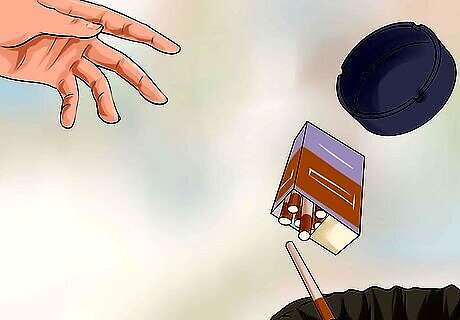
Do not smoke. Smoking is associated with higher myostatin levels. To lower your myostatin levels, do not start smoking. If you are already addicted to nicotine, adopt a plan to quit smoking. The best way to quit smoking is to gradually phase out the behavior. For instance, if you decide that in two weeks’ time, you want to stop smoking completely, cut your cigarette intake by 25% today. Cut it by another 25% about five days later. After about 10 days, cut your cigarette consumption by 25% again. Finally, when two weeks have elapsed, smoke your final cigarette. Nicotine gum and patches can also help you combat your addiction.
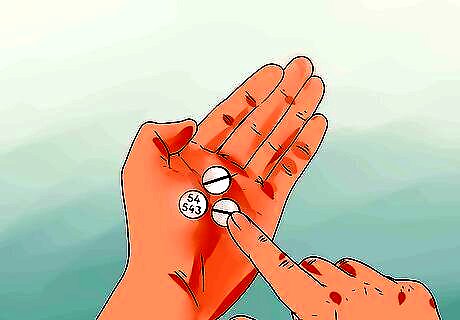
Use a myostatin inhibitor. Myostatin inhibitors are experimental and are for people with medical conditions that affect muscle development. You might qualify for treatment using one, though, if your goal is to treat such a disorder. You’ll need a prescription since they are not available over the counter. Talk to your doctor about your options for lowering your myostatin levels using an inhibitor. Another experimental procedure, myostatin-inhibiting gene therapy, is in the early stages of development. This may someday be available for patients with degenerative muscle disorders.
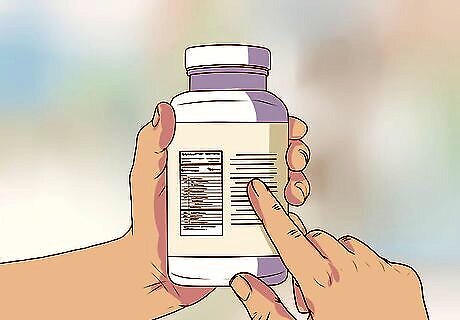
Ask about follistatin supplement. Follistatin inhibits the production of myostatin. Follistatin-based supplements may be available that can lower your levels of myostatin. Most of these supplements use fertile chicken egg yolk isolate, so if you have an egg allergy, you might not be able to use them. Generally, follistatin supplements come in powdered form. They are blended with water or milk, then consumed. Follistatin is expensive, not widely available, and may pose risks to the liver. Still, talk to your doctor about whether it might be an option for you.











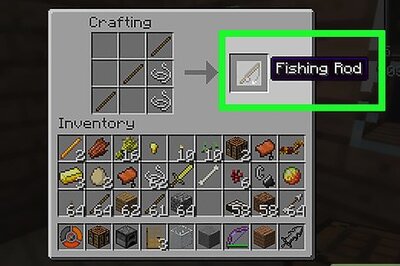

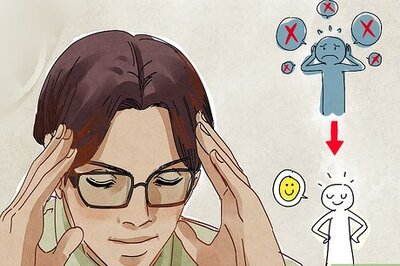





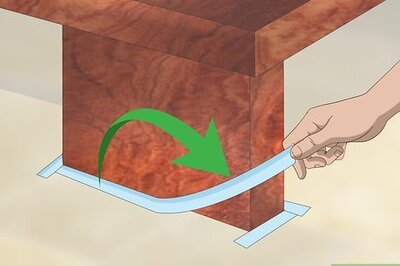
Comments
0 comment